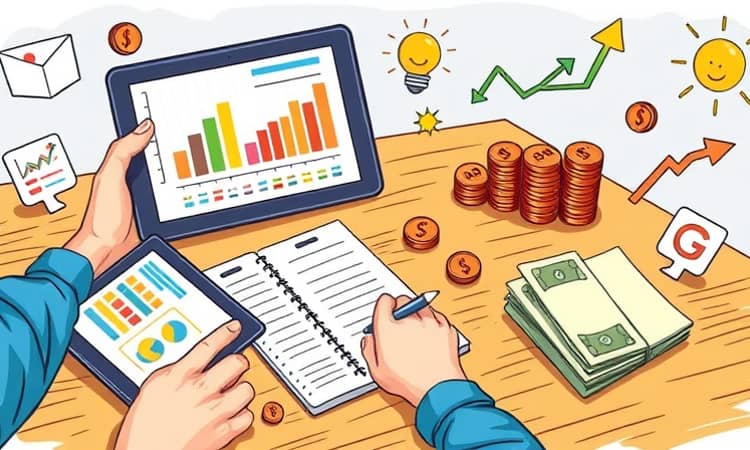Budgeting Tools to Easily Achieve Your Financial Goals

Achieving financial stability begins with a clear and structured budget that aligns spending with personal aspirations. Whether you aim to pay off debt, save for a home, or boost retirement contributions, a well-defined plan empowers you to make informed choices and avoid costly surprises.
This comprehensive guide explores the best budgeting apps of 2025, combines digital and analog methods, and offers actionable steps you can implement immediately. From top-rated software to tactile paper planners, discover the tools and techniques that suit your style and drive lasting success.
Understanding the Power of Budgeting
At its core, budgeting is about intentional decision-making. By setting limits and tracking every dollar, you foster greater control over your finances and open doors to opportunities previously out of reach. The discipline built through this process extends beyond money, reinforcing confidence and patience in other areas of life.
Creating a budget also sharpens self-awareness. Reviewing spending patterns helps you understand emotional triggers, such as impulse purchases or recurring subscriptions that no longer serve you. With these insights, you can redirect resources toward goals that genuinely reflect your values.
Establishing a budget unleashes a sense of achievement whenever you hit milestones, whether that’s cutting monthly dining-out expenses or reaching a savings plateau. Each small victory lays the foundation for long-term progress and sustainable wealth building.
Top Digital Budgeting Tools for 2025
Modern budgeting apps offer real-time data synchronization, personalized insights, and automation features that reduce manual effort. With security protocols on par with banking institutions, these platforms grant both convenience and peace of mind.
When evaluating digital tools, consider your need for automation, the level of custom reporting you require, and whether you prefer a free option or premium features. Integration with investments, bill alerts, and friendly user interfaces can turn a good app into an indispensable ally.
To maximize benefits, explore built-in goal-setting modules and dashboards that provide at-a-glance metrics. These visual summaries reinforce positive behavior by highlighting overspending trends and celebrating progress toward house down payments, emergency funds, or debt reduction.
Paper-Based Planners and Physical Notebooks
For many, writing by hand deepens engagement and accountability. Physical planners invite you to slow down, reflect, and honor the tactile satisfaction of marking checkboxes or shading progress bars.
Look for planners with dedicated sections for monthly overviews, weekly expense logs, and goal-tracking templates. Templates that allow for drawing charts or annotating notes encourage creative approaches, such as color-coding categories to highlight high-priority areas.
Although digital apps excel at automation, paper planners excel at mindfulness. They ensure you remain connected to the emotional journey of saving, walking you through incremental achievements and helping you internalize productive habits.
Major Budgeting Methods Explained
Understanding budgeting frameworks allows you to pick an approach that feels intuitive. Each method offers a unique balance between structure and flexibility, so experimenting is essential. Here are five popular techniques:
- Traditional Budgeting: Track all inflows and outflows, then assign fixed amounts to categories like groceries, rent, and entertainment. This method builds awareness through detailed categorization.
- Zero-Based Budgeting: Every dollar is assigned a purpose, ensuring no money is left unallocated. This level of precision prevents wishful spending and promotes intentional financial decisions.
- Pay-Yourself-First Budget: Prioritize automatic transfers to savings or investments before paying bills. This ensures long-term objectives receive attention before discretionary spending.
- Envelope System: Divide cash into physical or digital envelopes labeled by category. Once an envelope is empty, no additional spending is allowed in that area.
- 50/30/20 Rule: Allocate 50% of income to essentials, 30% to lifestyle choices, and 20% to savings or debt repayment. This approach simplifies budgeting for individuals who prefer broad guidelines.
Weigh the pros and cons of each approach. Zero-based budgeting offers maximum control but may require more time, while the 50/30/20 rule saves setup effort but allows for looser spending boundaries. Consider blending elements to suit your unique needs.
Practical Steps to Take Control of Your Finances
Once you’ve selected your tools and preferred method, follow a proven roadmap to turn plans into action:
- Document all income streams and fixed expenses, including subscriptions and recurring fees.
- Define specific and realistic goals that outline target amounts and timelines, such as saving $5,000 for a vacation in six months.
- Map out a detailed, actionable budgeting strategy in your chosen platform or notebook, breaking large objectives into weekly milestones.
- Set up automatic deposits to savings accounts to ensure discipline and consistency.
- Use alerts, reminders, or calendar events to check balances and categorize transactions.
- Address any budget variances by adjusting spending categories or reassigning funds in real time.
- Celebrate progress by acknowledging milestone achievements, boosting motivation for continued success.
By following these steps, you cultivate a resilient budgeting routine. Over time, this framework becomes second nature, enabling you to adapt swiftly when income fluctuations or unexpected expenses arise.
Tips and Strategies for Long-Term Success
Sustaining momentum requires more than initial enthusiasm—it demands continuous learning and adaptation. Consider these professional tips:
• Leverage app analytics to identify unnecessary expenses and redirect funds toward high-impact goals.
• automate savings where possible, creating an “out of sight, out of mind” approach that minimizes manual intervention.
• Periodically audit subscriptions and memberships to avoid wasted spending on unused services.
• review your progress regularly by setting aside time each week to compare actual spending against planned budgets.
• Collaborate with a partner or friend to share accountability and celebrate milestones together.
• involve household members for joint goals, ensuring everyone contributes ideas and maintains transparency about shared expenses.
• When planning for major life events like buying a home or funding education, seek guidance from financial professionals to validate your approach.
Conclusion
Empowering yourself with the best budgeting tools and techniques is an investment in your financial freedom. By embracing both high-tech apps and analog planners, experimenting with methods, and following a disciplined process, you pave the way for lasting success.
Start today: choose one tool, adopt one method, and commit to tracking your finances consistently. Remember that every mindful choice brings you closer to your dreams, transforming financial stress into confidence and resilience.
References
- https://mint.intuit.com
- https://www.nerdwallet.com/article/finance/best-budget-apps
- https://www.erincondren.com/budget
- https://www.usa.gov/features/budgeting-to-meet-financial-goals
- https://www.dividend.com/how-to-retire/5-budgeting-apps-to-help-you-hit-your-financial-goals/
- https://www.ameriprise.com/financial-goals-priorities/personal-finance/setting-financial-goals
- https://www.indeed.com/career-advice/career-development/budgeting-methods
- https://www.chase.com/personal/financial-goals/budget






